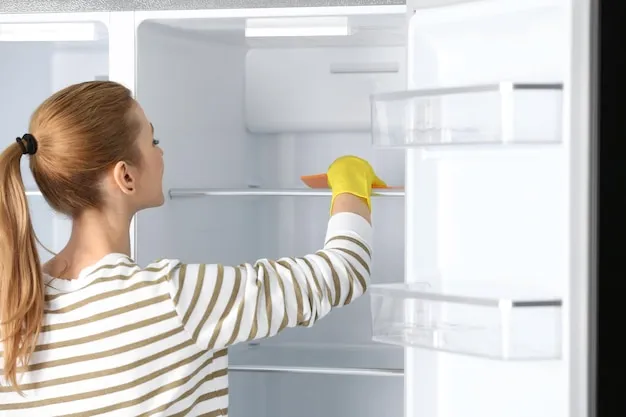Channel your inner Vogue and Confidence!

People mostly use bleach to clean household appliances for the complete removal of germs and bacteria. However, there’s one thing people often don’t look after, and that’s the post-affect of the bleach. You cannot clean every household essential with bleach, as it may have certain implications. So, it would be better if you do not clean with bleach to prevent damage. The guidance of a professional like Lazy Susans cleaning company would be suitable.
The reason is that bleach could result in discoloration and even reduce the lifespan of furniture. So, if you’re thinking, ‘Is cleaning with bleach harmful?’ The details here will offer you the correct answer.
So, here are the items you should avoid washing with bleach.
You’ll find many people using natural stones for their premises to increase the aesthetic appeal. But when it comes to cleaning them, bleach might be the last agent you should think of.
Bleach causes discoloration and weakens the stones by going deep into the pores, causing long-term damage. So, instead, you clean with bleach and harm the beauty of natural stones, mild soap and water would be the best method for cleaning porous countertops.
Stainless steel appliances are one of those household essentials that you cannot clean with bleach. It causes coercion that removes the oxide layer, and the second issue is the pitting. Prolonged use can form small holes in the surface, which could attract more bacteria and allergens.
So, you can use vinegar, mild soap, and a microfiber cloth to clean the steel appliances and preserve their quality.
Wooden furniture and surfaces require a sustainable approach to remove dirt and stains, and bleach would not be an ideal regular wood cleaning solution. The reason is that bleach strips off the wood finishing and weakens it from the inside.
Instead of using bleach, you can form a cleaning solution with vinegar and olive oil to clean your furniture and wooden floor and protect them from long-term damage.
Grout appearing on tiled surfaces could be a hurdle to tackle, but if it is clean with bleach, expect more trouble. Bleach thins the grout lines and hardly makes them visible. They’ll spread more, cause damage to the tiles, and shorten their lifespan.
Therefore, use natural cleaning agents like baking soda, vinegar spray, and hydrogen peroxide for a safe procedure. These cleaning agents have zero reaction, so you can expect the removal of grout without harmful outcomes.
Bleach is one of the most commonly used items when cleaning outfits, but it can cause damage when used on delicate and colored fabrics. The faded color and weak fibers would be the outcome. Your clothes might even shrink due to the excessive use of bleach.
Therefore, a solution would be to use oxygen-based bleach, as it is color-safe and retains the color of your outfits. This technique will take care of the stains on your outfits and prevent harmful outcomes.
Just like delicate outfits, carpets, and upholstery should not be cleaned with bleach because it’ll set the stains instead of removing them. The reason is the reaction of fabrics, as bleach contains chlorine, which weakens the fibers and might even result in wear and tear.
Natural cleaning agents like baking soda and vinegar would be effective for this job as they’re eco-friendly and non-toxic. With no chemicals in the cleaning agents, your carpets and upholstery would be safe.
Cleaning children’s toys and play areas should be done with natural cleaning agents instead of bleach. The unwanted skin irritation, fumes, and the risk of ingestion are the risks you might bear.
So, keep the health of your kids safe, avoid using bleach, and switch to a sustainable approach. A cleaning solution of soapy water and detergents safe for babies would be suitable.
Using bleach for cleaning bowls, pots, and spoons can be harmful, as the residues it leaves behind can cause health damage. The harmful effects of bleach on humans cause breathing problems and skin infections. So, it would be better to avoid bleach and look for another cleaning procedure.
For instance, you can opt for hot water, dish soap, and vinegar to form a cleaning solution. This procedure leaves no residues and is non-toxic, so you can expect a safe cleaning method.
Most people ask a question, ‘How do you keep your appliances clean?’ Understand one thing: bleach is not the answer. Bleach is a cleaner in liquid form and can cause a short circuit in your electrical appliances.
For the safe side, you can look for a cleaning technique with a microfiber cloth, alcohol wipes, or even electronic-safe sprays. A risk-free approach to maintaining electronics and small appliances is your best strategy.
Bathroom fixtures like toilets, showers, and bathtubs with sealants should be cleaned with the required materials. You cannot use bleach to deal with the germs and bacteria. The harsh fumes appearing on the sealants and showers can cause you damage.
Opt for a damage-free procedure and use natural cleaning agents like baking soda, vinegar, and sustainable bathroom cleaners. This way, you’ll not only keep bathroom fixtures safe but also prevent health diseases.
There are some risks of using bleach at home, and you might be unaware of them. The reason is that bleach has the highest ratio for removing stubborn stains, but the risks of damage come along the way. Issues like:
These are the ones that people mostly avoid looking into, and once they face the effects, they stop using bleach. So, once you read these risks, it will be easier to look for alternatives to bleach. Or, you can contact an expert like Lazy Susans commercial cleaning services to prevent the risk of bleach.
You’ll find people looking for an answer to their question, ‘What can be mixed with bleach for cleaning?’ Well, here you’ll get the answer for that and the cleaning materials that you can use with bleach.
The tips for cleaning with bleach help reduce the risk of damage and keep your household items safe from harm. So, if you don’t have any idea about it, here are the tips you can use.
Now that you know about the household items you should not clean with bleach, there won’t be hurdles or the risk of damage. Instead, you can opt for natural cleaning agents to deal with grout and germs on floors and outfits.
Furthermore, preventing the use of bleach can keep your health safe, especially when cleaning children’s toys and play areas. The skin infection and breathing problem won’t be an issue.

I am Mehmand Wali, an Author at Vogue Vocal and a skilled SEO Expert & Outreach Specialist.
My expertise lies in creating authentic, optimized content that drives visibility and engagement.
With strong experience in outreach, content strategy, and digital marketing, I work across industries.
At Vogue Vocal, I share professional insights that empower readers and businesses alike.